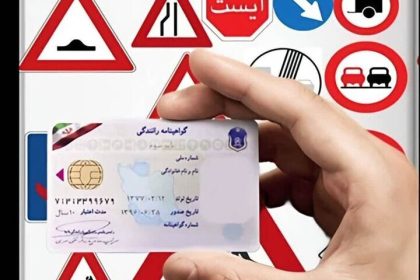The Museum of Ancient Iran with the official name of the National Museum of IranIt is considered one of the most valuable cultural and historical treasures of the country, which is located in the heart of Tehran, the capital of Iran. This museum that It is known as the mother museum and the first museum of the countrywas established in 1316 solar year and has a rich collection of ancient and artistic works of Iran from the Paleolithic era to the Islamic era. Of course, the idea of establishing a museum goes back to the time of the constitution; But its implementation is related to the first Pahlavi period and the order of Reza Shah. Stay with us in this article from tourism magazine flytodayLet’s introduce and review the works in this museum.
From the constitution to today The story of the establishment of the National Museum of Iran
The idea of establishing a museum to preserve Iran’s historical and cultural treasures was first proposed during the constitutional era; But this idea was put into practice when Reza Shah Pahlavi came to work and the special importance he gave to preserving Iran’s national and historical identity. In 1308, by order of Reza Shah, the construction of the magnificent building of the National Museum of Iran was entrusted to the French architect, Andre Godard. Inspired by authentic Iranian architecture, Godard presented a beautiful and lasting design for this museum. The implementation of this project was carried out by two Iranian architects, Haj Abbas Ali Memar and Master Murad Tabrizi, who combined their skills with Godard’s design to create a magnificent and authentic Iranian building.
In addition to the importance of preserving history and culture, the development of archaeological activities in Iran also added to the necessity of creating such a museum. In addition, cooperation with foreign archaeologists and the influence of authentic Iranian architecture with special features such as the use of bricks, plastering, tiling and arches played a significant role in shaping the architecture of this museum. Finally, after several years of efforts, the National Museum of Iran was officially opened in 1316 and was divided into two main parts, the Museum of Ancient Iran and the Museum of the Islamic Era. The Museum of Ancient Iran is devoted to ancient artifacts from the Paleolithic era to pre-Islamic times, and the Museum of the Islamic Era is dedicated to the artistic and archeological works of the Islamic era of Iran.
- The address of the Museum of Ancient Iran: Imam Khomeini St., the beginning of Si Tir St., Professor Rollen St., number one.
- Phone: 6-021-66702061
A unique combination of tradition and modernity in the building of the Museum of Ancient Iran
The National Museum of Iran is a masterpiece of intelligent combination of traditional and modern architecture. The French architect of this building, Andre Godard, was inspired by the magnificent Sassanid architecture, especially the Kasri porch, and presented a design that is clearly visible at the main entrance of the museum with its high arch and wide porch. However, Godard did not stop at imitating the past and designed a strong and efficient building using modern construction materials and techniques. The use of reinforced concrete, large windows and skylights are among the modern features of this building.
The building of the Museum of Ancient Iran has axial symmetry and a special order that conveys a sense of peace and balance to the viewer. On the other hand, the extensive use of brick as one of the main materials has given the building an Iranian identity. Proper lighting also plays a role in displaying historical works in the best possible way.
The presence of the central courtyard and gardens around the Museum of Ancient Iran establish a visual connection between the interior and exterior spaces and offer visitors the opportunity to relax and breathe in the open air. In general, the architecture of this museum is a symbol of Iranian identity and an effort to preserve and introduce the cultural heritage of this land. The intelligent combination of tradition and modernity in this building is a model for Iranian architecture in the 20th century.
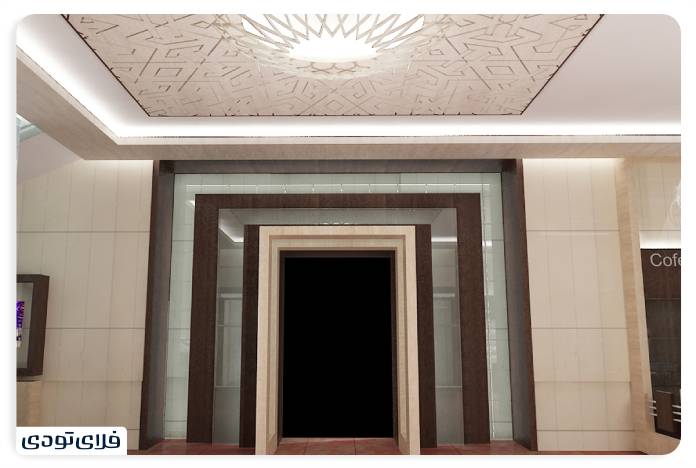
Valuable collections of Iran Museum A journey into the depths of Iranian history and culture
The National Museum of Iran is one of the must-see places in Tehran and houses a unique collection of the country’s ancient artifacts. This museum, having works from different historical periods, opens a window to the glorious past of our country. In the following, we will examine some of the most valuable collections of this museum.
Prehistoric collections
In this collection, you will see very old works that we will introduce below.
- Palaeolithic works: These are the oldest works in the museum and stone and bone tools that are more than a million years old. Paleolithic works show the presence of early humans in the land of Iran and their skill in making tools.
- Neanderthal Artifacts: Tools made by Neanderthals are also displayed in the museum. These works show the social and cultural life of these early humans.
- Neolithic pottery: Decorated pottery and simple pottery from the Neolithic period indicate the beginning of agriculture and animal husbandry in Iran.
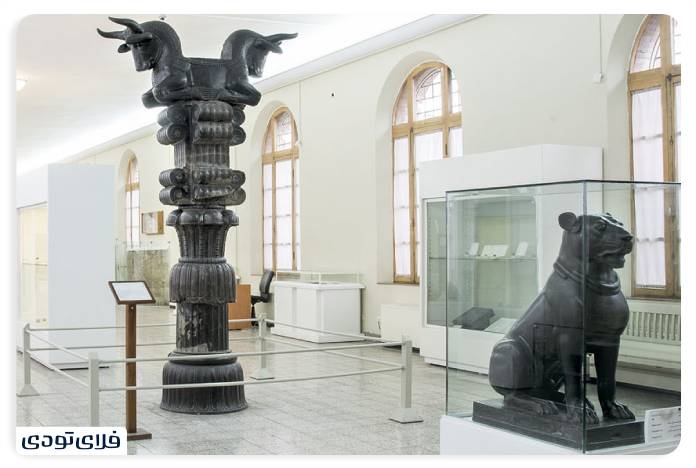
Historical collections
In the following, we mention the works that can be seen in these collections.
- Elamite works: Bronze statues, pottery and cylindrical Elamite seals are among the spectacular works of this period. These works show the advanced civilization of the Elamites in southwestern Iran.
- Achaemenid works: Achaemenid gold dishes, jewels and decorative objects are the most important and valuable works of this period. These works show the power and glory of the Achaemenid Empire.
- Parthian Artifacts: Parthian sculptures, coins and decorative items are also displayed in the museum. These works also narrate the art and culture of the Parthian period.
- Sasanian works: Sasanian silverware, jewelry, and woven fabrics are among the prominent works of this period. These works are related to the heyday of Iranian art and industry in the Sassanid period.
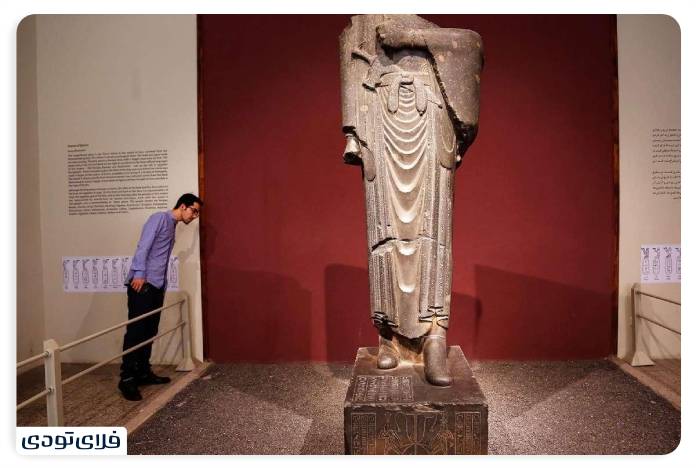
Islamic collections
In these collections, you will see works from several Islamic periods. In the following, we introduce these works.
- Early Islamic works: Pottery, coins and early Islamic decorative objects are considered as the main works of this period. These works show the spread of Islam in Iran and its impact on art and culture.
- Seljuk works: Among the most valuable works of this period, we can mention Seljuk pottery, tiles and metal objects. These works of art and architecture show the beautiful and complex Seljuk period.
- Artifacts of Ilkhani: pottery, tiles and metal objects of Ilkhani are also exhibited in the museum. These works depict the influence of Mongolian art on Iranian art.
- Safavid works: Safavid terracotta works, tiles and paintings are among the prominent works of this period. These works also show the flourishing of Iranian art and culture in the Safavid period.
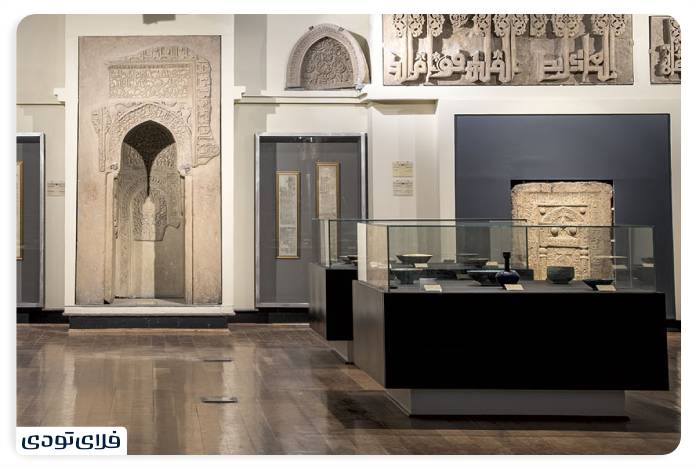
Other collectionsIran Museum
In addition to prehistoric, historical and Islamic collections, you can also visit some other collections that we will introduce below.
- Coin collection: The National Museum of Iran has a very valuable collection of coins from different historical periods of Iran, which you can visit in this section.
- Jewelry Collection: Jewelry and ornaments from different historical periods are among the valuable works of the museum.
- Collection of fabrics: Silk, silk and linen fabrics from different historical periods represent the textile art in Iran.
- Collection of documents and books: historical documents, handwritten Qurans and old books are also valuable works of the museum library.
Introducing the building of the Museum of Ancient Iran Before Islam and after
The National Museum of Iran consists of two separate buildings, which include the Museum of Ancient Iran and the Museum of the Islamic Era. We will explain each one below.
Museum of Ancient Iran Narrator of stories from the ancient land of Iran
The Museum of Ancient Iran is a treasure of Iran’s history and civilization, which tells the story of the ups and downs of this ancient land on two floors. In each of these floors, you will see prehistoric and historical works.

first floor Museum of Ancient Iran
This floor is dedicated to prehistoric times. Here you can get acquainted with stone tools, beautiful pottery, small statues and other objects that represent the daily life and beliefs of people in the millennia BC. Among the prominent works of this class, the following can be mentioned.
- Cave find: Examples of bone tools and personal ornaments from this ancient cave are displayed on this floor.
- Burnt City Base Bowl: This bowl with the image of an antelope and a tree is known as the world’s first animated image due to its animation.
ground floor Museum of Ancient Iran
This floor is dedicated to the historical period. Here you can get acquainted with valuable works from different historical periods of Iran, including Achaemenid, Elamite, Parthian, Sasanian and Islamic. Among the significant works of this class, the following can be mentioned.
- Hasanlu objects: prominent examples of iron objects made in the Median period that were discovered in Hasanlu region.
- The works of Noushijan, Godin and Babajan: valuable works from the Median period that were obtained from these ancient places.
In general, the Museum of Ancient Iran is older and is dedicated to the prehistoric and historical works of Iran. The building of this museum was also designed by Andre Godard, a French architect and built with red bricks. This building is considered one of the symbols of modern Iranian architecture.
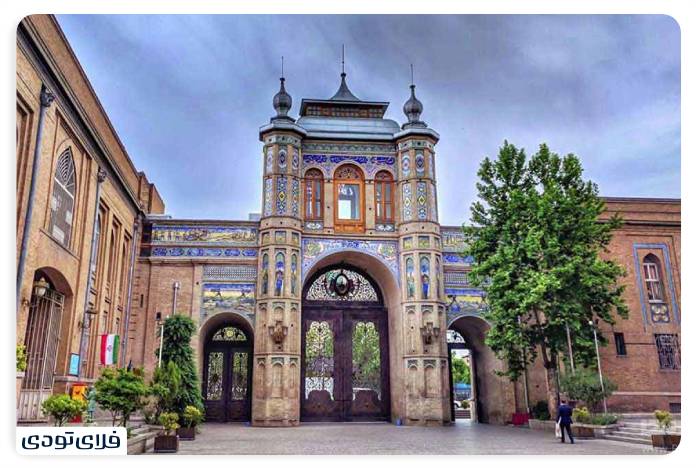
Museum of Islamic Era | Artifacts from different Islamic eras of Iran
This section is also dedicated to the works of the Islamic era of Iran. The Museum of the Islamic Era, like the Museum of Ancient Iran, contains smaller sections, each of which is related to a specific Islamic period. The Sadr section of Islam, Seljuq, Ilkhani, Timurid, Safavid, Qajar, etc. are among them. In the Museum of the Islamic Era, you can see works such as beautiful tiles, exquisite Qurans, glazed pottery, Islamic coins, etc.
Other parts of the Museum of Ancient Iran
In addition to the two main sections that we mentioned earlier, the National Museum of Iran has other sections and facilities that we will introduce below.
- Specialized sections: The museum has various specialized sections dedicated to displaying specific works. Among these sections, we can mention the coin section, the jewelry section, the metal objects section, and the pottery section. These sections allow researchers and enthusiasts to study and examine the works in more detail.
- Library and Document Center: The museum has a rich library and a document center that contain valuable resources in the field of Iranian history and archeology. Researchers and students can use these resources for their research.
- Temporary exhibition halls: In this museum, there are halls for holding temporary exhibitions. These exhibitions are dedicated to the introduction of new works as well as holding cultural events.
- Cafe and restaurant: visitors museum They can also use the cafe and restaurant in it.

In what ways is the importance of the National Museum of Iran?
Iran Museum plays a very important role in preserving, introducing and promoting national identity, attracting tourists and also advancing scientific research. In the following, we will examine each of these cases in detail.
Importance in the field of national identity
As a large and safe repository, the National Museum of Iran houses the ancient and artistic works of Iran from the Paleolithic era to the Sassanid era. These works are valuable treasures that shape the national identity of Iranians and help in understanding the cultural roots. By keeping these works, the museum preserves Iran’s cultural heritage and protects it from the damage of time and destructive factors.
The works that have been exhibited in the Museum of Ancient Iran from different periods present a comprehensive picture of Iran’s history, culture and civilization. This plays a significant role in making people aware of their cultural roots. Visiting the National Museum strengthens people’s sense of belonging to the history and culture of Iran, and this makes people feel that they are part of a great nation with a long history.
In fact, the display of valuable and diverse works in the Museum of Ancient Iran reminds us that Iran has a rich history and civilization and that Iranians are the heirs of this great civilization. Besides that, this museum, by displaying the achievements of the past, inspires the future generations and motivates them to work for the preservation and development of the country’s cultural heritage.
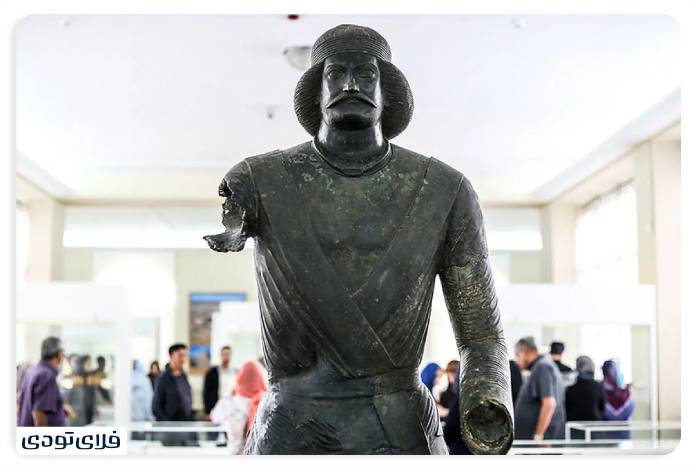
Importance in the field of tourism
The National Museum of Iran is one of the most important tourist attractions of our country, which attracts a large number of domestic and foreign tourists every year. The valuable and diverse works of this museum present an attractive and spectacular image of Iran to the world and help to introduce Iran’s rich culture and civilization. Cultural tourism is one of the most important sources of the country’s income, and this museum, as one of the main poles of cultural tourism, plays an important role in creating employment and economic prosperity. You can from any city with Train ticket reservation Travel to the capital and have an unforgettable experience of viewing the museum’s historical artifacts.
Importance in the field of scientific research
The National Museum of Iran as a research center plays an important role in advancing archaeological and historical studies and is one of the most important archaeological research centers in Iran. By studying and carefully examining the works in the museum, you can get valuable information about the history, culture and civilization of Iran. This museum carries out joint research projects in cooperation with universities and scientific centers, and this helps to develop the knowledge of archeology and history of Iran.

Comparing the National Museum of Iran with the great museums of the world
The Iran Museum, especially the Ancient Iran section, is a valuable collection of the country’s history and culture, even comparable to the world’s major museums such as the Louvre, the British Museum, and the Metropolitan Museum. Although this museum is less old than many big museums in the world, its historical and cultural richness is always taken into consideration. There are similarities between these museums; Among them, all of them are rich collections of ancient artifacts and evidence of ancient civilizations and play an important role in introducing their country’s culture to the world.
However, there are also differences. Due to their colonial history, European museums have a wider collection of world works; Meanwhile, the Museum of Ancient Iran focuses more on the ancient works of Iran. In addition, due to historical developments, the Museum of Ancient Iran has experienced more challenges, including the departure of works from the country; But despite these challenges, this museum with its many potentials is still considered as one of the most important cultural and historical centers of the country. Some of the most important strengths of the Museum of Ancient Iran are:
- strong national identity and deep connection with Iranian people;
- the diversity of ancient works from different historical periods;
- The unique architecture of the museum building;
- High tourism potential.
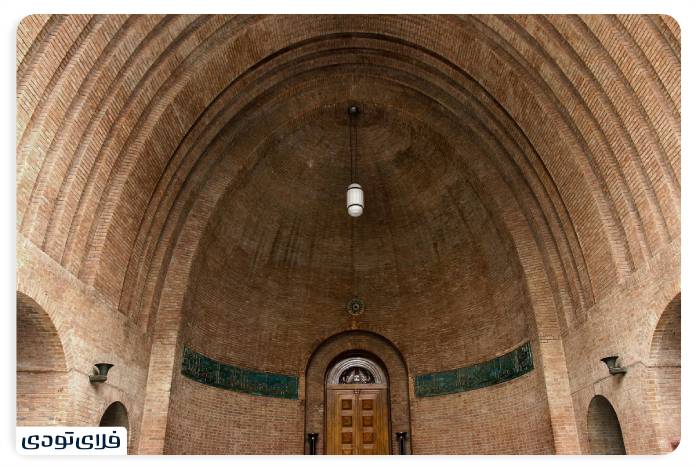
How to go to the Museum of Ancient Iran?
The Museum of Ancient Iran is located in the heart of Tehran, the capital of Iran. To visit this museum, you can visit Imam Khomeini St., the beginning of C-Tir St., Prof. Rollen St., No. 1 in Tehran. In the following, we point out the ways to access the museum from the city of Tehran itself.
- Metro: The closest metro stations to this museum are Hasanabad Square and Imam Khomeini Square stations.
- Bus: There are several bus lines that stop near the museum, and you can choose the most suitable line using the routing apps.
- Taxi: You can easily reach the museum by using online taxis or linear taxis.
In addition, you can go to the Museum of Ancient Iran with a private car and use its parking lot. Visiting hours of the museum are as follows:
- Saturday to Wednesday from 9 am to 6 pm
- Thursday and Friday from 9 to 20
- Museum ticket price: It is different for Iranian and foreign visitors and may change periodically. Usually, discounts are considered for students, students and some special groups.

5 key works of the Museum of Ancient Iran
With all the interpretations that have been made so far, we can confidently say that this museum is a full-length mirror of Iranian history and identity that allows us to know our roots better. In the following, we introduce 5 prominent and famous works in the museum.
- Stone statue of Darius the Great: This magnificent statue was made of stone and was built by the order of Darius the Great. This work is considered a symbol of the power and glory of the Achaemenid Empire and is displayed in this museum as one of the most valuable works.
- Gold and cement vessels: The collection of gold and cement vessels of the Iran Museum shows the art and craft of metalworking in ancient Iran. These dishes are decorated with beautiful designs and reliefs and show the elegance and precision of Iranian artists in making them.
- Elamite pottery: Elamite pottery with geometric and animal motifs is one of the most attractive parts of the Ancient Iran Museum. These pottery show a part of the ancient civilization of Elam and show the progress of pottery art in ancient Iran.
- Paleolithic stone tools: Stone tools made by early humans during the Paleolithic era are also displayed in the museum. These tools represent the first efforts of man to make tools and use them for hunting and daily life.
- The reliefs of Persepolis: the magnificent reliefs of Persepolis are also ready to be visited in the museum. These reliefs depict stories and important historical events and are a symbol of the unique art and architecture of the Achaemenid era. After the discovery and archaeological excavations, these ancient works were separated from Persepolis and transferred to the museum for protection and display.
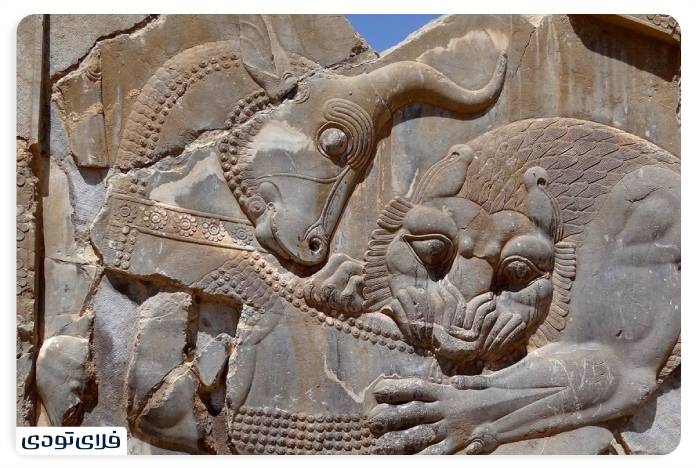
In addition to the mentioned cases, the salt man is also one of the unique archaeological discoveries of Iran, which is kept in the National Museum of Iran. This natural mummy, which was found in the Zanjan salt mine, offers us a unique picture of a man’s life in ancient times.
It is interesting to say that the hair, beard and even the contents of this man’s stomach have been well preserved and scientists have obtained valuable information about the diet, diseases and lifestyle of people in that era by carefully examining it! Zanjan Salt Man’s Head, as one of the most important archeological symbols of Iran, attracts many tourists every year.
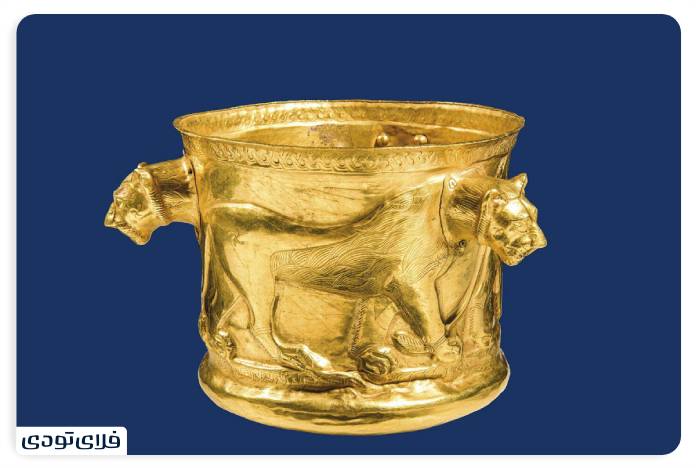
National Museum of Iran A shining gem of Iran’s history and civilization
In this article, we reviewed the history and introduced the works of the Museum of Ancient Iran. This museum is one of the most valuable tourist and cultural places in Iran, which displays a manifestation of the civilization of several thousand years of this land with a rich collection of ancient artifacts from the Paleolithic to the Islamic era. The Museum of Ancient Iran, which was opened in 1316 AD, has become one of the most important cultural destinations in Iran with its magnificent architecture inspired by the Kasri arch.
The works in the museum are also very diverse; From simple stone tools to complex and valuable works of art. If you have been to this museum, which of its works was the most attractive to you? Share with us and those interested in museum tours in the comments section.
Frequently asked questions about the Museum of Ancient Iran
Where is the Museum of Ancient Iran located?
This museum is located in Imam Khomeini Street, Tehran, at the beginning of Si Tir Street, in the National Museum of Iran building.
Where is the National Museum of Iran and how can you go there?
This museum is located on Si Tir Street in Tehran. To get there, you can use a private car or public transportation.
When can you visit the Museum of Ancient Iran?
Visiting hours of the museum are usually from 9 am to 6 pm.
What parts are there in the museum?
The museum has various sections including Paleolithic, Achaemenid, Parthian, Sasanian and Islamic.
What works are exhibited in the National Museum?
In the National Museum, valuable artifacts such as pottery, statues, inscriptions, coins and jewelry are displayed.
Is it possible to take photos or videos inside the museum?
In some parts of the museum, photography and filming without flash is allowed; But it is better to get permission from the museum officials before taking photos.
Does the Museum of Ancient Iran have a guide for visitors?
Yes, museum guides have a special card that separates them from other people.
Is it free to visit the Museum of Ancient Iran?
No, a fee must be paid; Of course, the ticket price is different for Iranian and foreign visitors and may change periodically.
RCO NEWS















